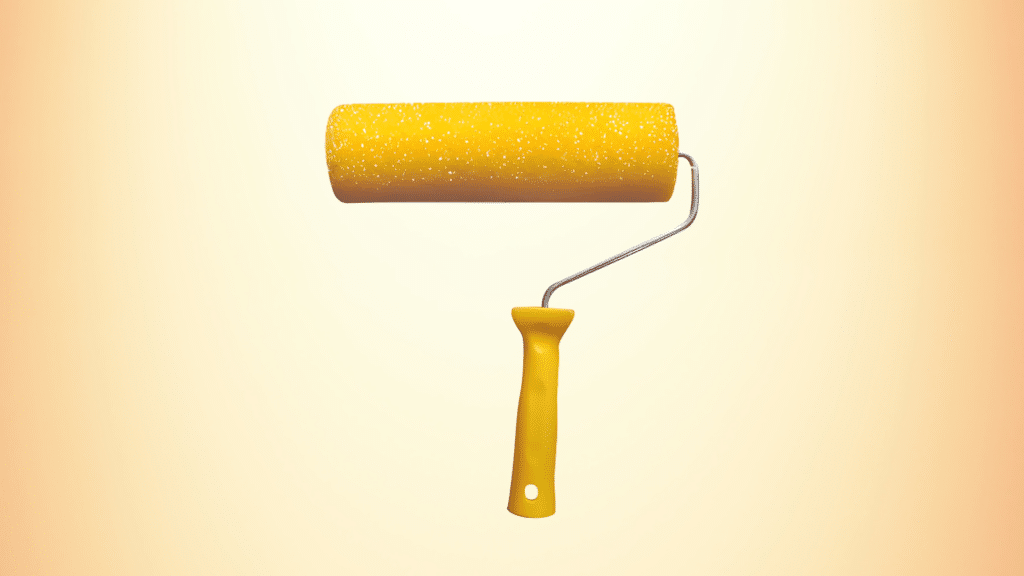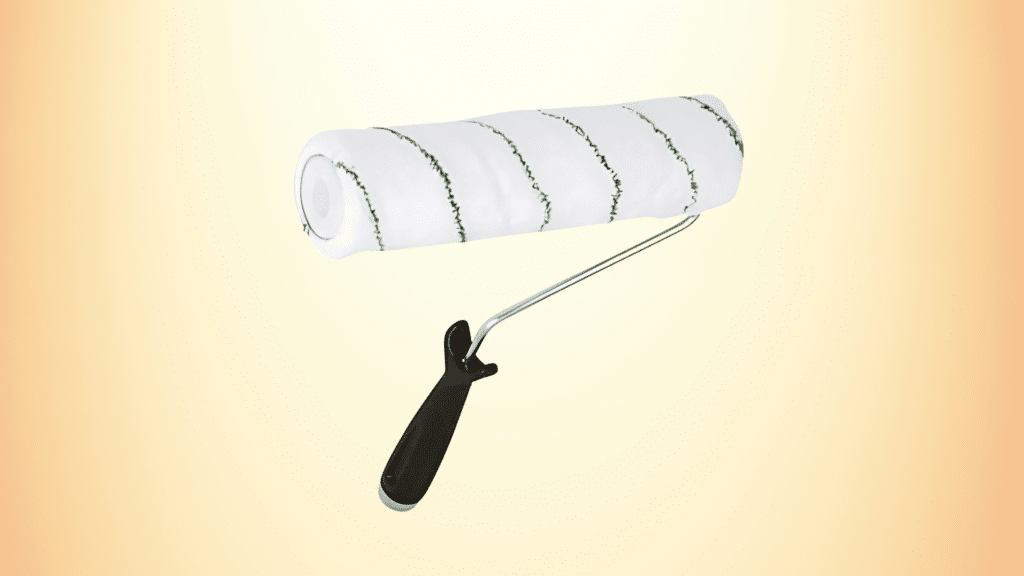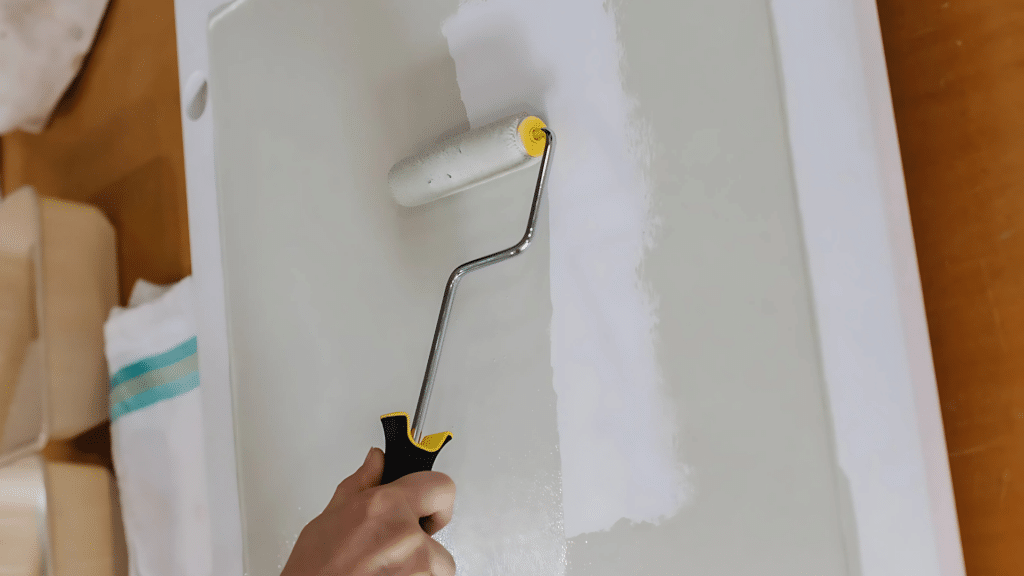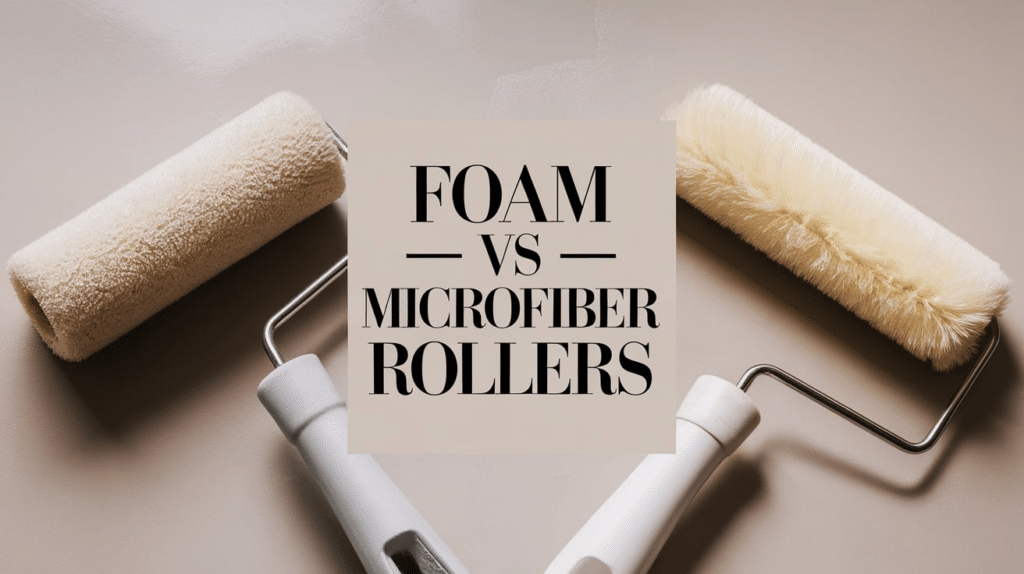When it comes to painting cabinets, the right roller can make a big difference in the final look. Foam and microfiber rollers are both popular choices, but which one is better for the job? I’ve used both, and each has its own strengths.
Foam rollers are great for getting a smooth, even finish, while microfiber rollers can help with better paint coverage. The key is knowing which one works best for your specific needs.
In this blog, I’ll compare the two so you can choose the best roller for your next cabinet project. Let’s see which one will give you the best results!
Why Roller Choice Matters for Cabinets
Choosing the right roller for painting cabinets is essential to achieving the best finish. Cabinets are often high-traffic areas in a home, and a smooth, professional-looking finish can make a huge difference in a room’s overall aesthetic.
The roller you select plays a key role in determining how even the paint is applied and how smooth the final surface will look.
Cabinets are made of various materials and finishes, such as wood, laminate, and metal, and often have detailed features or intricate designs. Using the wrong roller could lead to unwanted texture, streaks, or uneven coverage, all of which can make the cabinets look poorly painted or unprofessional.
For example, foam rollers are great for smooth, flat surfaces, but they may not be the best choice for textured cabinets or those with detailed designs. Microfiber rollers, on the other hand, work better on textured surfaces and can cover larger areas more efficiently.
What is a Foam Roller?

A foam roller is covered in dense foam and is often lightweight and easy to use. It’s typically used to apply a smooth and even layer of paint, making it ideal for glossy finishes and smooth surfaces like cabinet doors.
Foam Rollers: Advantages and Disadvantages
| Advantages | Disadvantages |
|---|---|
| Smooth, Glossy Finish | May Leave Air Bubbles |
| Foam rollers provide a very smooth and even glossy finish. | Rolling too quickly or with too much pressure can cause air bubbles. |
| Less Dripping | Not Ideal for Textured Surfaces |
| Foam rollers hold less paint, reducing the chances of drips. | Foam works best on smooth, flat surfaces, not on textured or intricate surfaces. |
| Ideal for Small, Smooth Surfaces | Less Durable |
| Foam rollers are perfect for small projects or smooth cabinet doors. | Foam rollers tend to wear out faster, especially with thicker paints. |
| Lightweight and Easy to Handle | Requires Multiple Coats |
| Foam rollers are easy to control and handle due to their lightweight design. | Since foam rollers hold less paint, several coats may be needed to achieve full coverage. |
| Affordable | |
| Foam rollers are generally more affordable than microfiber rollers. |
What is a Microfiber Roller?

A microfiber roller features tiny fibers that help to pick up and hold more paint. These fibers ensure even coverage and can handle both smooth and textured surfaces. Microfiber rollers are designed to leave a smooth, professional finish without streaks or marks.
Microfiber Rollers: Advantages and Disadvantages
| Advantages | Disadvantages |
|---|---|
| Better Paint Coverage | More Dripping |
| Microfiber rollers hold more paint, providing better coverage and fewer coats. | Microfiber rollers hold more paint, leading to increased drips if not used carefully. |
| Smooth, Streak-Free Finish | Heavier |
| Microfiber rollers create a smooth, streak-free finish, even on textured surfaces. | Microfiber rollers are bulkier and heavier, which can cause hand fatigue during long sessions. |
| Works Well on Textured Surfaces | More Expensive |
| Microfiber rollers are great for cabinets with textures or intricate designs. | Microfiber rollers are usually more expensive than foam rollers. |
| Durable and Long-Lasting | Harder to Clean |
| Microfiber rollers are more durable and last longer than foam rollers. | Microfiber rollers require more effort to clean than foam rollers. |
| Efficient for Large Projects | |
| Ideal for larger cabinet surfaces, making painting quicker and easier. |
Key Differences Between Foam and Microfiber Rollers
Understanding the key differences between foam and microfiber rollers can help you decide which one is the best fit for your project.
1. Finish Quality
-
Foam Rollers: Provide a very smooth, glossy finish with little texture, making them perfect for high-gloss or satin finishes on cabinets.
-
Microfiber Rollers: Provide a smooth, streak-free finish. They’re especially helpful when you need to cover large areas quickly.
Recommendation: If you’re going for a flawless glossy finish, go for a foam roller. If you’re working with thicker paint and need better coverage, a microfiber roller is the better choice.
2. Paint Coverage
-
Foam Rollers: They are best for lighter coverage. While they spread the paint evenly, they don’t hold much, so you may need to apply multiple coats.
-
Microfiber Rollers: These rollers hold more paint, making them ideal for larger projects. You can cover more area faster and reduce the number of coats needed.
Recommendation: For smaller cabinet jobs or thin layers of paint, foam rollers work well. But for large cabinets or multiple coats of paint, microfiber rollers are the better choice.
3. Durability
-
Foam Rollers: While affordable and effective for small projects, foam rollers can wear out quickly, especially if you’re using them with thick paints or on rough surfaces.
-
Microfiber Rollers: Microfiber rollers are more durable and can handle larger, tougher jobs without losing effectiveness.
Recommendation: Microfiber rollers are a more long-lasting investment. They are better suited for larger projects or repeated use.
4. Ease of Use
-
Foam Rollers: Foam rollers are lighter, easy to handle, and perfect for applying a light layer of paint. They’re also easier to clean after use.
-
Microfiber Rollers: Microfiber rollers are slightly heavier and bulkier, but they hold more paint, reducing the number of passes you need to make. However, they might require a bit more effort when cleaning.
Recommendation: Foam rollers are the best choice for ease of use and smaller projects. For larger tasks where efficiency is key, microfiber rollers will get the job done faster.
5. The Cost
-
Foam Rollers: Foam rollers are typically less expensive than microfiber rollers, making them a budget-friendly option for small projects. However, they may wear out faster, meaning you might need to replace them more often.
-
Microfiber Rollers: Microfiber rollers are generally more expensive upfront, but they tend to last longer and provide better coverage, making them a cost-effective choice for larger or more frequent painting projects.
Recommendation: Foam rollers are a good option if you have a smaller budget or only need to paint a few cabinet doors. But if you’re working on a larger project or plan to paint cabinets often, investing in microfiber rollers will save you time and money in the long run.
When to Use a Foam Roller for Cabinets?
Foam rollers are ideal for achieving that perfectly smooth, glossy finish on flat, smooth surfaces.
If your cabinet doors are smooth and you are using high-gloss paint, a foam roller can help you get that flawless look. They’re also perfect for light touch-ups and small, detailed projects.
Best Scenarios for Foam Rollers:
-
Glossy or satin finishes
-
Smaller, smooth cabinet surfaces
-
Detailed, intricate painting work
-
Light coats of paint
When to Use a Microfiber Roller for Cabinets?
Microfiber rollers are the way to go if you’re working on larger cabinet surfaces or need to apply thicker coats of paint.
They provide better coverage, reduce the number of coats needed, and work well on textured surfaces or intricate designs. If your cabinets have some texture or you’re painting a whole kitchen, microfiber rollers are a great choice.
Best Scenarios for Microfiber Rollers:
-
Larger, textured cabinet surfaces
-
Thick paint or multiple coats
-
Faster coverage
-
More durable for long-term use
How to Choose Between Foam and Microfiber Rollers

Choosing the right roller depends on the size of the job, the type of paint you’re using, and the surface of your cabinets. If you’re looking for a high-gloss finish with minimal texture, foam rollers are the way to go.
But if you’re dealing with larger areas or textured cabinets, microfiber rollers will give you better coverage and a more durable finish.
Here are some questions to ask yourself before choosing a roller:
-
What is the surface of the cabinet like? If your cabinets have texture, choose a microfiber roller.
-
How many coats of paint will you need? For multiple coats or thicker paint, go with microfiber.
-
Do you want a smooth finish? Foam rollers are best for ultra-smooth finishes.
-
How large is the project? Smaller projects are best suited for foam rollers, while larger projects will benefit from microfiber rollers.
Best Roller Brands for Painting Cabinets
Choosing a reliable roller brand is key to achieving a high-quality finish. While there are many options available, here are some of the best roller brands you can consider for painting cabinets:
Purdy
Purdy is well-known for producing high-quality rollers that deliver a smooth, even coat of paint. Their foam and microfiber rollers are both durable and effective, making them a top choice for professional painters.
Wooster
Wooster is another trusted brand in the painting world. Their microfiber rollers are known for holding a lot of paint and providing great coverage, making them perfect for cabinet projects. Their foam rollers also offer smooth finishes with minimal texture.
Sherwin-Williams
Sherwin-Williams offers a range of high-quality rollers that cater to different types of projects. Their microfiber rollers provide excellent coverage and work well with both water-based and oil-based paints.
Bates Choice
Bates Choice is known for affordable yet reliable rollers. Their microfiber rollers offer a smooth, even finish, and they’re perfect for large cabinet projects.
Common Mistakes to Avoid When Using Rollers for Cabinets
Even if you have the right roller, mistakes can still happen.
- Overloading the Roller: Overloading your roller with paint can lead to drips and uneven coverage. Always dip the roller in the paint and then roll it on the tray to remove excess paint before applying it to the cabinet.
- Rolling Too Quickly: Rolling too quickly can cause streaks or roller marks in the paint. Roll slowly and carefully to avoid these issues.
- Not Rolling in One Direction: Always roll in the same direction to maintain a consistent finish. Rolling back and forth in different directions can cause texture marks and uneven coverage.
- Skipping Primer: Make sure to prime your cabinets before painting. Skipping this step can result in poor paint adhesion and an uneven finish.
Tips for Using Foam and Microfiber Rollers
Both foam and microfiber rollers have their benefits, but using them correctly is key to getting the best results. A few tips to get the most out of your rollers:
- Don’t Overload the Roller: Too much paint on your roller can lead to drips and uneven application. Dip the roller into the paint, then roll it on a tray to remove any excess.
- Use Thin, Even Coats: Thin coats of paint dry faster and will give you better results. Apply multiple thin coats instead of one thick coat to avoid drips and streaks.
- Roll in One Direction: When painting cabinets, always roll in the same direction to prevent marks and streaks. For a smooth finish, follow the grain of the cabinet.
- Clean Your Rollers Properly: After each use, clean your foam or microfiber roller with warm, soapy water. If you’re using oil-based paint, clean it with mineral spirits. Proper cleaning ensures your rollers last longer.
Conclusion
Choosing the right roller for painting cabinets is key to getting great results. Foam rollers are ideal for smooth, glossy finishes on flat surfaces and smaller projects.
Microfiber rollers, however, hold more paint and are better for larger areas or textured surfaces. They provide better coverage and last longer.
When selecting a roller, consider your project needs. Foam rollers are a good choice if you’re working with smooth cabinets and want a glossy finish. Microfiber rollers are more efficient for larger or textured surfaces.
The right roller can make a big difference in your painting project, so choose the one that best suits your needs.

